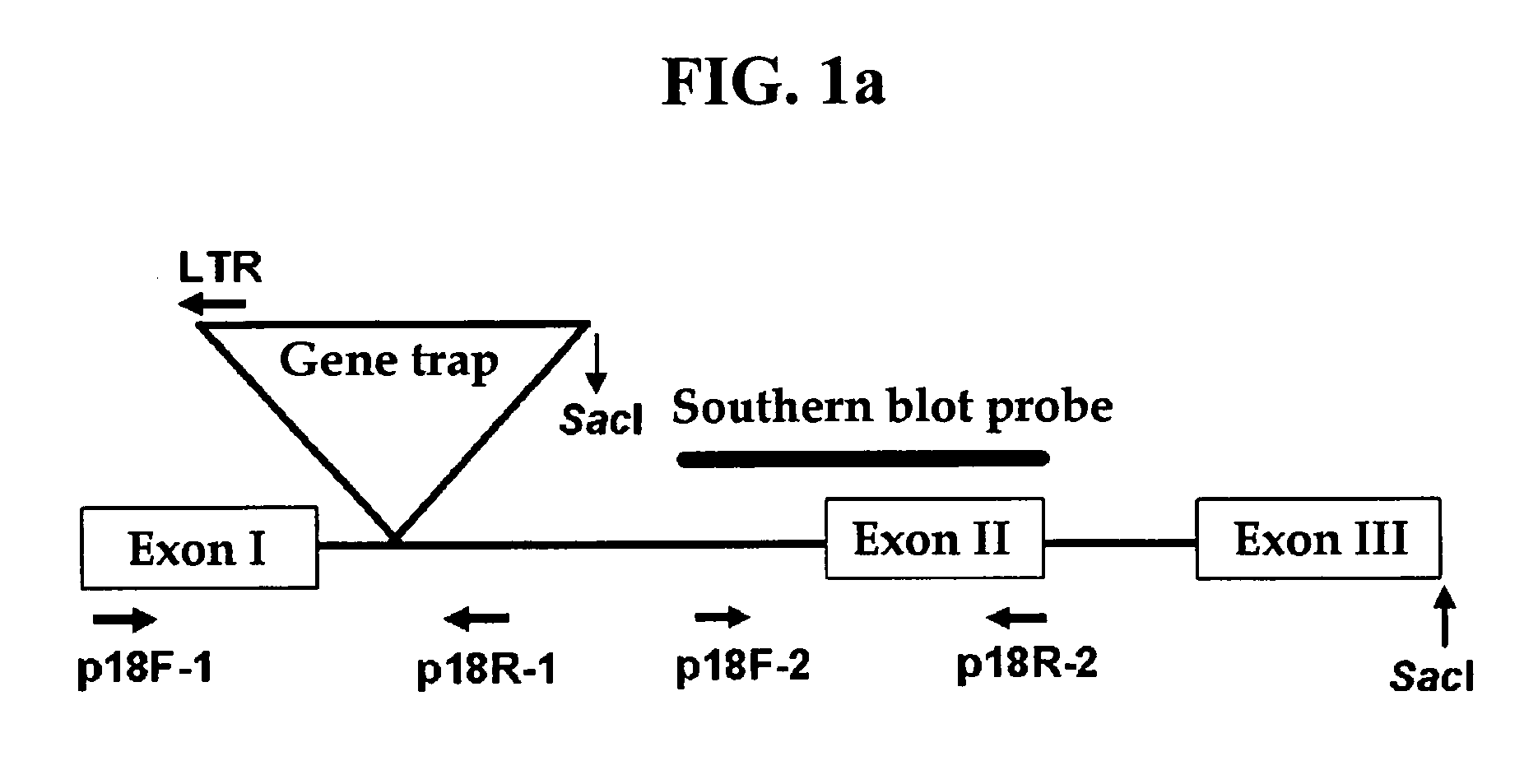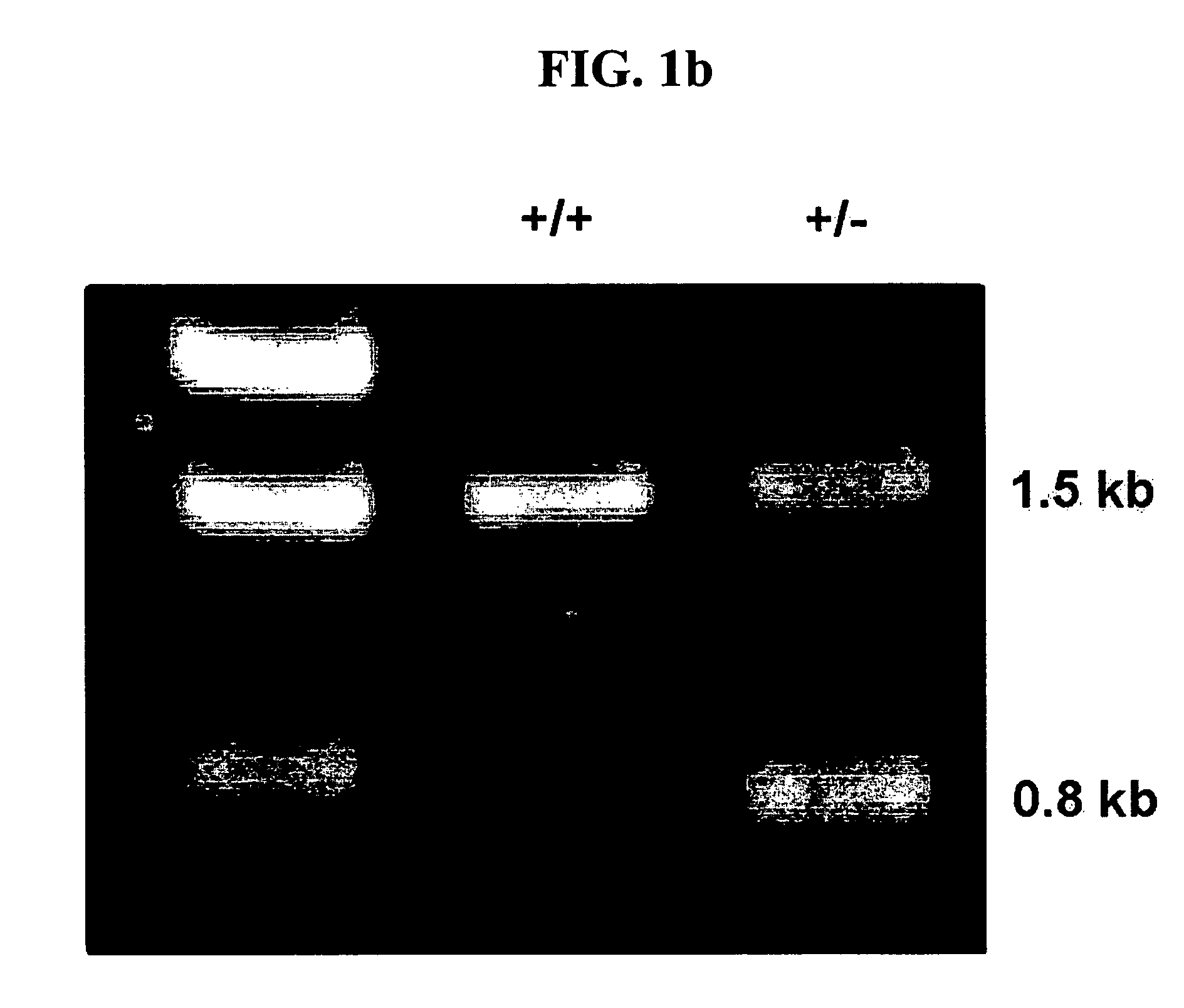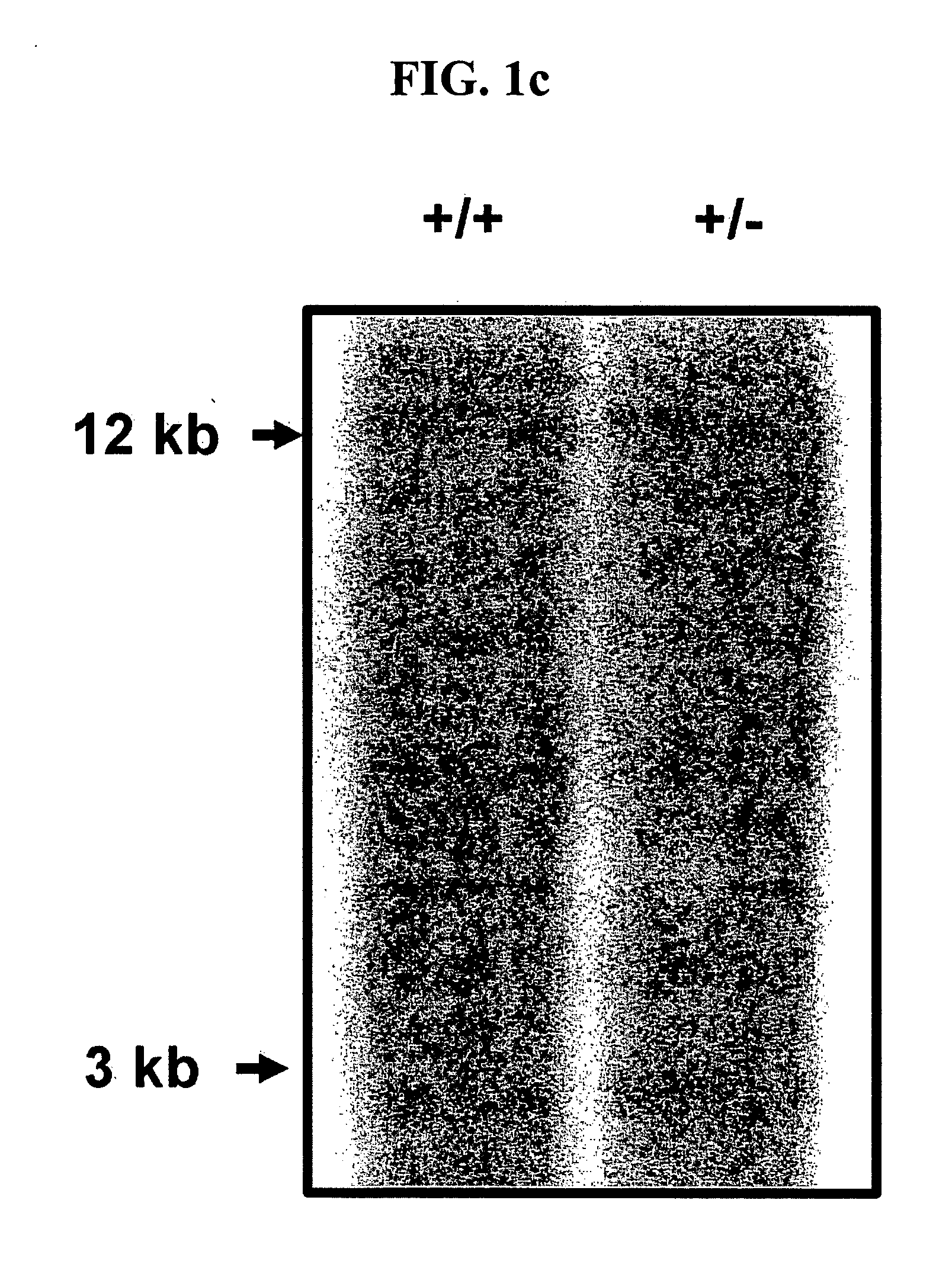Novel use of aim 3 acting as a tumor suppressor
a tumor suppressor and tumor cell technology, applied in the field of tumor suppressors, can solve the problems of insufficient understanding of the biological functions of p18, inability to fully establish the intracellular biochemical mechanism of the signal transduction system where the damage caused by dna damage activates atm/atr, and so as to inhibit the proliferation of tumor cells and promote the phosphorylation of atm/atr
- Summary
- Abstract
- Description
- Claims
- Application Information
AI Technical Summary
Benefits of technology
Problems solved by technology
Method used
Image
Examples
example 1
[0184] Generation of AIM3 Gene-deficient Mutant Mice
[0185] The present inventors generated AIM3-deficient mice by a gene trap method (Zambrowicz, B. P. et al., Nature, 392:608-611, 1998). Among the embryonic stem cell library of 129 / SvEvBrd mouse in which the gene trap vector was randomly introduced (OmniBank Library, Lexicon Genetics), the OST377244 clone including AIM3 genes mutated by the integration of the gene trap vectors was found out. Using this clone, C57BL6 / albino AIM3 heterozygous mice were generated following the standard protocol of Lexicon Genetics, Inc. The heterozygous mice were interbred to generate the homozygous offspring.
example 2
[0186] Examination of Genotypic and Phenotypic Characteristics of AIM3 Gene-deficient Mice
[0187] Determination of Site of Gene Trap Vector Insertion in AIM3 Allele
[0188] The site of a gene trap vector insertion in an AIM3 mutant allele was determined by sequencing analysis. Here, the sequencing was performed by Pangenomics, a sequencing company. As shown in FIG. 1a, the sequencing results indicated that the gene trap vector was inserted between exon I and exon II of the AIM3 gene.
[0189] Genomic PCR Analysis
[0190] From the tail of each of the mice generated in , genomic DNA was isolated. Then, about 1.5-kb DNA fragment containing the exon I region of the AIM3 gene was amplified by PCR with a primer pair of p18F-1 and p18R-1 (SEQ ID NO: 3 and SEQ ID NO: 4) (see FIG. 1a). In addition, about 0.8-kb DNA fragment containing a part of the AIM3 gene and a part of the gene trap vector was amplified by PCR with the p18F-1 primer and an LTR primer (SEQ ID NO: 5) binding to the gene trap ve...
example 3
[0203] Examination of Histological Characteristics of AIM3± Mice
[0204] In order to determine the functions of the AIM3 gene, the present inventors isolated tissues and organs from the AIM3± mice and analyzed the histological characteristics of the isolated tissues and organs.
[0205] At first, after sacrifing mice at given time intervals, various tissues were isolated and fixed with 10% formalin. The fixed tissues were embedded in paraffin, followed by subjecting into H&E staining. In order to determine B cell metastasis, immunohistochemical staining for surface marker B220 was performed with paraffin slide. After de-paraffin using xylene, the slide was incubated in a blocking buffer (1:100, 5% BSA and 0.1% Tween 20 / PBS) containing an anti-B220 antibody (Santacruz Biotech.) for 2 hours. After the slide was washed with PBS, the tissues fixed to the slide were incubated again with an avidin-conjugated secondary antibody and DAB solution.
[0206] As a result, various tumors were found i...
PUM
| Property | Measurement | Unit |
|---|---|---|
| Fraction | aaaaa | aaaaa |
Abstract
Description
Claims
Application Information
 Login to View More
Login to View More - R&D
- Intellectual Property
- Life Sciences
- Materials
- Tech Scout
- Unparalleled Data Quality
- Higher Quality Content
- 60% Fewer Hallucinations
Browse by: Latest US Patents, China's latest patents, Technical Efficacy Thesaurus, Application Domain, Technology Topic, Popular Technical Reports.
© 2025 PatSnap. All rights reserved.Legal|Privacy policy|Modern Slavery Act Transparency Statement|Sitemap|About US| Contact US: help@patsnap.com



